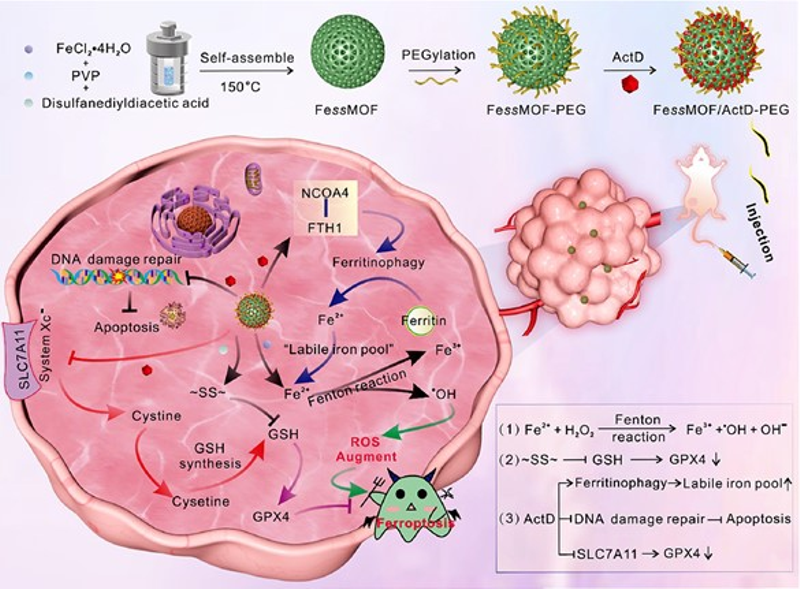Breast cancer, the most commonly found malignant tumor and also the first most common cause of death among women, has posed a major threat to their health. Despite substantial advances in diagnostic techniques and combinatorial therapy, effective treatment of breast cancer with good prognosis and high survival remains a challenge, mainly due to the acquired resistance and invasive nature of malignant tumors. Therefore, an urgent need exists for the development of novel therapeutic approaches to breast tumor treatments. The mechanism involved in ferroptosis (an emerging type of regulated cell death) has been ascribed to the excessive accumulation of lipid peroxidation (LPO) through the iron-dependent Fenton reaction. It has been evidenced by various studies that ferroptosis plays an important role in tumor regulation and in the development of breast cancer.
Based on the team’s previous innovative work in breast cancer treatment (Adv. Mate. 2019, 31(46): 1905825; Chem. Eng. J. 2023, 452: 138422; 2023, 452: 139517; Adv. Healthcare Mater. 2024: 2304522; 2024, 13(4): 2302537; Int. J. Bio. Macromol. 2024, 258: 128952), Zeng Xuemei’s research team from the College of Life Sciences of FNU and Prof. Yan Shuangqian’s research team from the Straits Institute of Flexible Electronics (SIFE, Future Technologies), jointly demonstrate a highly effective tumor ferrotherapy using iron (II)-based metal-organic framework (FessMOF) nanoparticles, assembled from disulfide bonds and ferrous ions. The as-prepared FessMOF nanoparticles exhibit peroxidase-like activity and pH/glutathione-dependent degradability, which enables tumor-responsive catalytic therapy and glutathione depletion by the thiol/disulfide exchange to suppress glutathione peroxidase 4. Upon PEGylation and Actinomycin D (ActD) loading, the resulting FessMOF/ActD-PEG nanoplatform induces marked DNA damage and lipid peroxidation. Concurrently, the teams find that ActD can inhibit Xc- system and elicit ferritinophagy, which further boosts the ferrotherapeutic efficacy of the FessMOF/ActD-PEG. In vivo experiments also demonstrate that the fabricated nanoplatform presents excellent biocompatibility and a high tumor inhibition rate of 91.89%.
Relevant work, entitled “Iron (II)-based metal-organic framework nanozyme for boosting tumor ferroptosis through inhibiting DNA damage repair and system Xc-,” has been published in the top internationally renowned journal Journal of Nanobiotechnology. FNU is the sole affiliation of the paper, with Zeng Xuemei, the assistant researcher of the College of Life Sciences and Biomedical Research Center of South China of FNU, and Prof. Yan Shuangqian, as the corresponding authors, and Xue Panpan, a doctoral student of FNU, as the first author. This work was supported by the National Natural Science Foundation of China, the Natural Science Foundation of Fujian Province, and the Cultivation Plan for Science and Technology Innovation Team from the College of Life Sciences of FNU.

(Translated by Chen Junfan/Reviewed by Xie Xiujuan)
